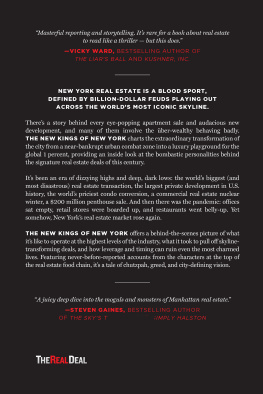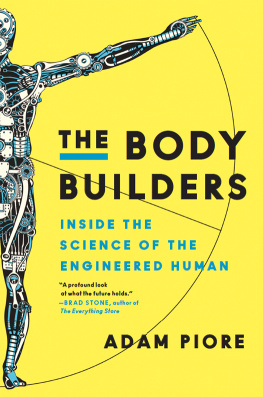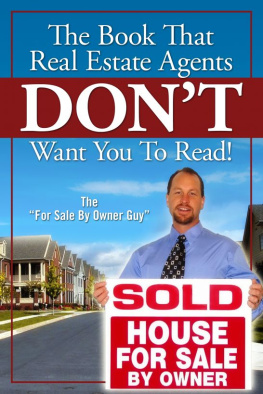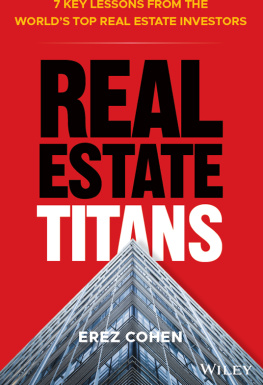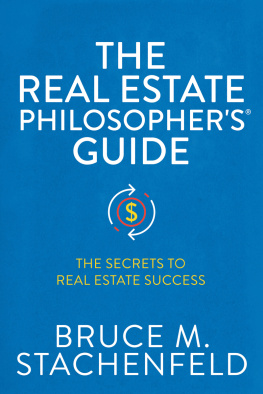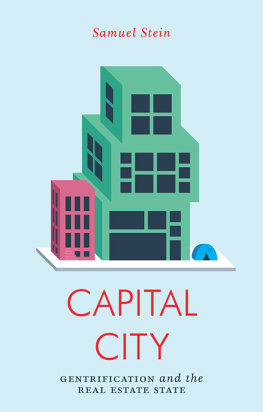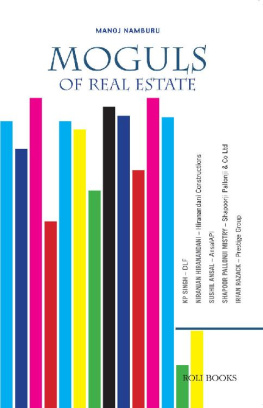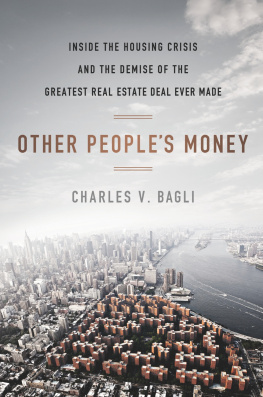Contents
Guide
Pagebreaks of the Print Version
The New Kings of New York
RENEGADES, MOGULS, GAMBLERS,AND THE REMAKING OFTHE WORLDS MOST FAMOUS SKYLINE
By Adam Piorefor The Real Deal
Edited byStuart Elliott and Hiten Samtani

Copyright 2022 by The Real Deal
The Real Deal LLC is a subsidiary of Korangy Publishing Inc.
Cover design by Paul Dilakian
Cover illustration by Maciej Frolow
Cover copyright 2022 by The Real Deal
The Real Deal supports the right to free expression and the value of copyright. The purpose of copyright is to encourage writers and artists to produce the creative works that enrich our culture.
The scanning, uploading, and distribution of this book without permission is a theft of the authors intellectual property. If you would like permission to use material from the book (other than for review purposes), please contact . Thank you for your support of the authors rights.
The Real Deal
450 West 31st Street
New York, NY 10001
www.therealdeal.com
Printed in the United States of America
First Edition: April 2022
Library of Congress Cataloging-in-Publication Data
Name: Piore, Adam, author.
Title: The New Kings of New York / Adam Piore
Description: First edition. | New York: The Real Deal, 2022
Identifier: ISBN 978-1-7379434-0-2
Contents
Introduction
It was the kind of triumphant moment the billionaire developer Steve Ross had been working towards his entire career.
The haunting voice of Grammy nominee Andra Day was soaring across the vast, sun-drenched plaza of Hudson Yards, while a troupe of Alvin Ailey dancers leapt and tumbled around her. Backstage, the 78-year-old Ross, trim, bespectacled, with a booming voice and prominent ears, was leading a procession of VIPs toward the threshold of the Vessel, the $200 million public art installation at the center of his megadevelopment on New York Citys Far West Side. As they stepped into the beehive-shaped structure and mounted the first of the Vessels honeycomb of stairs, a line of blue-robed Gospel singers appeared on a landing above them and launched into an emotional call-and-response with Day.
Youre broken down and tired, of living life on a merry-go-round.
Rise up!
And you cant find the fighter.
Rise up!
But I see it in you, so we gonna walk it out.
Rise up!
No one appeared to notice the irony that lyrics meant as a rallying cry for the oppressed should serve as the soundtrack for Ross and his entourage of one-percenters Martha Stewart, private equity titan Henry Kravis, Senator Chuck Schumer as they took in the full scale of the $25 billion project with its Rolex and Fendi stores, $35 million penthouses, and gleaming office towers. Indeed, at the opening ceremony of Hudson Yards that beautiful early spring day in March 2019, speaker after speaker emphasized how much the new development, billed as the largest private mixed-use project in North American history, would help New York City soar to new heights.
This will ensure we continue to attract the best and the brightest, Ross proclaimed.
It was the same message that former Mayor Mike Bloomberg and his deputy Dan Doctoroff had used to sell the public on the project back in 2005, along with the generous package of tax incentives that went with it. The redevelopment of New York City wouldnt just be good for builders like Steve Ross; theyd promised back then and Ross promised now. It would be good for all New Yorkers.
As Anderson Cooper took the stage with a man in a seven-foot-tall Big Bird costume and fired a cannon filled with confetti into the ebullient crowd, it was almost as if nothing had changed. As if this was still the same optimistic, pro-development world it had been back in the halcyon Bloomberg days, when local politicians and the media eagerly embraced that message, waxed poetic about the bucolic experience of walking the newly created High Line, and celebrated the citys status as the global financial mecca and burgeoning tech hub a city where the likes of Amazon and Facebook were swallowing up office space and Google had spent over $3 billion acquiring real estate over the past decade.
But on the other side of the velvet ropes, the pitchforks were out. Simmering class resentments were roiling New York City politics and feeding a populist backlash one that was now impossible to ignore. The opening of the massive complex came just weeks after progressive New Yorkers had risen up against the very policies that made it possible and successfully upended a hard-won deal that would have offered Amazon $3 billion in tax incentives similar to those enjoyed by Ross at Hudson Yards to build a sprawling corporate campus in Long Island City.
Just how much things were changing was apparent not from the celebrities and politicians in attendance that day but those who werent. Absent from the festivities were two officials who would normally be among the most likely to bask in their glow: New York Governor Andrew Cuomo and Mayor Bill de Blasio.
The truth was that in the years since Bloomberg had left office and Ross had won the coveted assignment to build the project, many New Yorkers had grown fed up with the specter of ugly, needle towers for the rich sprouting up on the edges of Central Park, the so-called Billionaires Row, casting shadows across the Great Meadow. Theyd read tawdry tales of how Russian oligarchs, Malaysian embezzlers, and Latin American drug lords were using $70 million penthouses to launder their dirty money, creating ghost towers and driving up land prices which in turn deprived city dwellers of affordable housing. Theyd looked upon the tech-bro arrivals Downtown and wondered what had happened to all the artists. And theyd watched with alarm as their own rents soared and the cost of living spiked. Many had begun to feel that the gritty, artsy, egalitarian New York City theyd always identified with was slipping away. Certainly, some in the media seemed to feel that way.
In the days leading up to Hudson Yards coming-out party, commentators turned their attention to the glittering new development and contemplated the tall walls of its luxury shopping mall, looming over 10th Avenue, like fortress battlements shutting out the rest of the city. They declared it a potent symbol of everything that had gone wrong.
Hudson Yards is, at heart, a supersized suburban-style office park, with a shopping mall and a quasi-gated condo community targeted at the 0.1 percent, New York Times architecture critic Michael Kimmelman wrote on the newspapers front page a few days before the opening.
It gives physical form to a crisis of city leadership, he continued, asleep at the wheel through two administrations, and to a pernicious theory of civic welfare that presumes private development is New Yorks primary goal, the truest measure of urban vitality and health, with money the citys only real currency.
New York magazines Justin Davidson lamented the wholesale transformation that had overtaken the city. Every time he approached Hudson Yards, Davidson wrote in a cover story, he felt a volatile mix of wonder and dejection in my chest.
I cant help feeling like an alien here, he wrote. I suppose this apotheosis of blank-slate affluence is someones fantasy of the 21-century city, but it isnt mine. Again and again, I have wondered who wanted it to be like this, and when it became a foregone conclusion.

